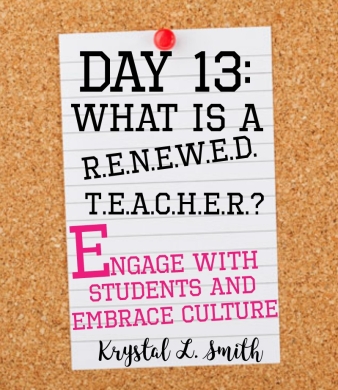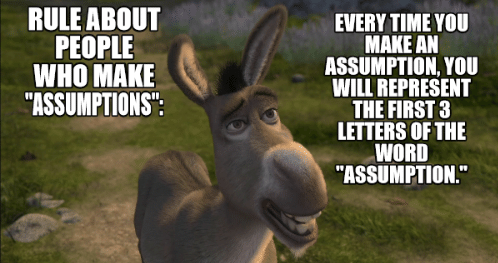No time to read? Click here to enjoy listening to this post.
I am what many would consider a veteran teacher. I am in my 11th year of teaching. For ten years, I taught in a low-income, title-one, and sub-urban school. The racial make-up was about 50% African American, 40% Caucasian, and 10% two or more races. According to the website, www.schooldigger.com, 100% of students are recipients of free/reduced school lunches.
This year, I decided to apply somewhere closer to home. I was blessed with two interviews, and offered 3 teaching positions; one of which I accepted which is about a 10 minute drive from home!
The school I currently teach in is also a low-income and title-one, but urban school. The racial makeup is about 94% African American, 2% Caucasian, and 3% two or more races. Based on information also from www.schooldigger.com, about 53% of students are eligible for free/reduced school lunches. It is the largest elementary (K-5) school in the district, but smaller than and houses less students than the school from which I transferred from.
Leaving my former district, I felt I was at the top of my game (but still with room for improvement). I may have been overly praised and evaluated, and I may have been led to believe I was a better teacher than what I really was because this year, I feel like a novice. But then again maybe I really was a great teacher for those students, in that school, at that time. Nevertheless, the change in schools has been a rude awakening for me.
Change is never easy. In fact, it is unavoidable, can help us grow, is often scary, but often brings opportunities. Many times we fight change. I actually fought changing my approach to teaching in my new classroom this year. I thought my routines, procedures, and style of teaching would be just as effective in my new home school as they were in my previous one. Y’all, I was all the way wrong, but I did not want to change. I didn’t think I needed to change. I wanted to change the kids and make them fit into my box. What was I thinking? That sounds like a teacher with a fixed mindset, right?
Things are getting better in my new classroom. I am actually teaching and not always dealing with discipline issues. I can say that this change has a lot to do with me being willing to change and not forcing my students to fit my mold. Don’t get me wrong, I strongly believe each and every child in my class can and will succeed. I believe they will not only meet my level of expectation, but will rise above my expectations. However, I had to meet them where they were.
On this 13th day of the “What is a R.E.N.E.W.E.D. T.E.A.C.H.E.R. Series,” I want to talk about the final E in T.E.A.C.H.E.R.
As a R.E.N.E.W.E.D. T.E.A.C.H.E.R, we should always:
ENGAGE WITH STUDENTS AND EMBRACE CULTURE
Upon applying to my new school district, I knew that I would more than likely teach in a

school that was considered high needs. A high-needs school according to the No Child Left Behind Act of 2001 is defined as “within the top quartile of elementary and secondary schools statewide, as ranked by the number of unfilled, available teacher positions; or is located in an area where at least 30 percent of students come from families with incomes below the poverty line; or an area with a high percentage of out-of-field-teachers, high teacher turnover rate, or a high percentage of teachers who are not certified or licensed.” I was used to working in this kind of school with these statistics. Because I felt this way, I made a few assumptions. You know what they say about that…
It was then that I stopped assuming I knew best, and started over by asking questions. The beginning of my school year was more challenging than even my first year out of graduate school. In my blog post, “Caveats to Day 13: An Overwhelming and Under-Prepared Beginning” I describe in detail what made this year more challenging than I anticipated in addition to my asinine assumptions. Click here to read or listen to a short blog post about them.)
On Engaging with Students
Now that you have the facts, starting over was challenging. I had to let go of what was, and focus on what is. I had to commit to getting to know my colleagues, students and their families and stop comparing them to my former colleagues and students. I used the 2 by 10 Strategy attributed to Robert Wlodkowski. I spent 2 minutes (give or take a few seconds) each day for 10 days in a row talking to my students about anything they wanted to talk about. Most times it was an impromptu conversation in the morning after Harambe, at their lockers, in the hall during transitions, before or after lunch, during dismissal, or during our morning circle.
This strategy is recommended for teachers to use with at-risk students. It is really easy to use if you only have a few at risk students in your classroom, but when the entire class is at-risk, it takes a bit more elbow grease. Some students needed more than 10 days. I can tell that it is working because my students and I get along well. (They don’t always get along well with each other, so I still have some work to do there.) Additionally, another educator in the building brought to my attention that one young lady in my class this year is 100% better behaved now than she was last year. She said, “I don’t know what you did, but keep doing it. She’s a totally different person. 100% better.” After I heard a few things about this student and her behavior last year, I was committed to “Making her My Girl!” I’m so glad I chose to engage with her and the rest of my scholars.
The strategy is not a magic trick and it’s nothing miraculous. It simply helps teachers build better relationships and rapports with their students.
On Embracing Culture
Because nearly 100% of the students in my 4th and 5th grade classes are African American (this has never been true for me prior to this year), I feel that it is important to mention this next statement. As an African American teacher in the United States, who attended a public school district (before having a major goal to eliminate racial disparities in achievement levels of African-American students) and a predominantly white University (before it had the Center for Urban Education), I was taught using a curriculum that was primarily and essentially Eurocentric. Because this is the education system in which I was molded, I am sure the way I teach is also Eurocentric in nature.
What does this mean? It means I am unable to connect with my students culturally. You may think that it does not matter because I look like my students. We know that color matters. YES, WE DO. We may not want it to matter, but that’s the unfortunate basis of the United States of America. The fact is that the color of my skin DOES NOT ALWAYS afford me opportunities to better relate to students and families that look like me. Culture is more than skin deep. My historical education has limited my ability to truly understand who I am as an African American. Because of this, I am unable to fully understand who my students are and furthermore unable to help them fully understand who they are.
According to Afroetry of www.afroectic.com in an article titled, Education: Europe-Centered (Eurocentrism) vs. African-Centered, we were and “are typically taught that human civilization begins with Greece and Rome…[and]…further educated within the framework of Greek, Roman and European culture. The substance of what [is] learn[ed] is rooted in the western stories [we] learn to read from, the mathematical concepts [we] learn in school, and the science applications that are rooted in the observations of white males.” To read this article in its entirety, please click here. We all know that human civilization began well before Greece and Rome.
I mention this to say that no matter where you teach, no matter your race, nationality, ethnicity, religion or cultural background, it’s our responsibility to learn about who we teach, and intentionally take the time to do so. We do not have to act or dress or pretend to be something we are not to understand those that we teach. It’s unnecessary to appropriate. These things make us look as if we are trying too hard, being fake, and typically backfire. It’s always best to Keep it 100 by being Audaciously Authentic. But we do need to talk to our students and their families, listen to them, respect them, and value the differences and the similarities we share. We should read what they read, watch what they watch, and go where they go. We should read about their history with non-judgmental lenses on. This is no easy enterprise, but I believe it is worth it for us as educators and furthermore for the development of our students, schools, country, and world.
In conclusion, although I am African American, my mindset is Eurocentric at best. There is nothing wrong with that. However, as Todd Nesloney and Adam Welcome say in the title of their book, the “Kids Deserve It.” Our scholars deserve renewed teachers that engage with them and are willing to and able to embrace their culture.
I learned a valuable lesson this year by changing school districts. I learned what worked before, may not work later, and in order to meet the needs of my students, I need to be a great teacher for these students, in this school, at this time, every time.

